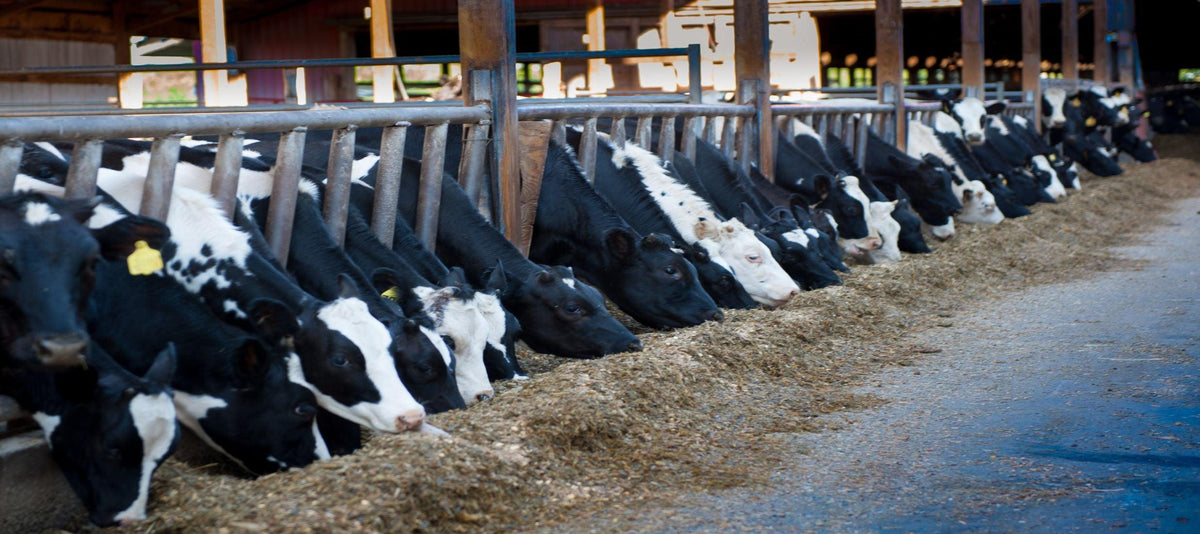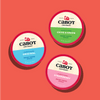
Farmer Friday: Allison Akins, Five Mile Farm
Springtime on the farm is by far the busiest time of year. Between welcoming calves to the herd, milking, planting corn, the first cutting of hay, working around the weather and equipment breakdowns; there’s not much downtime for farm families this time of year. In order to have a successful farm, you must work hard and tirelessly to get everything done.
The two primary crops for dairy farmers are corn and hay. Both are staples in cows’ diets. Farmers start planting corn after the ground thaws, and reaches about 50 degrees. The field will need to be “worked up”; that means wheel harrowing the topsoil.

Members of the MacGaflin Farm of Claremont, NH taking a quick break from wheel harrowing their corn fields to pose for us.
The harrows ensure that the ground is soft enough to get the seed planted about two inches below the surface. The wheel harrows also help to bring the rocks to the surface, and push the manure below the surface to fertilize the fields and replenish nutrients in the soil. When the wheel harrows surface large rocks, farmers need to remove them from the field for the safety of their equipment. This is an important job – but never a favorite!

Corn Sprouting at Welcome Stock Farm in Schulyerville, NY
Some corn seed takes over 100 days to mature, while other seeds take 80 days. Corn is planted in rows 30 inches apart and 6 inches between seeds. About 36,000 seeds are planted per acre. Most farmers hope to chop their corn in late September to early October – another busy time of year!
After planting corn, farmers will change equipment and begin their first cutting of hay. Some farmers chop their hay and others choose to bale it. Here in the northeast, hay is a mixture of legumes (alfalfa, or clover) and grasses.

Members of the Dutch Hollow Farm of Schodack Landing, NY are mowing one of their hayfields. You can see with each passing of the mower a windrow is created.
The first step in harvesting the hay crop is to make sure the plants are in mid-bloom. The mower cuts the hay down into rows, which are called windrows. Next comes raking. Just like you would rake leaves into a pile, a rake for hay puts several windrows into one large row. The hay is now ready to be baled or chopped.

Members of the Wright Place Farm of Clinton, ME are chopping a hayfield. Pictured with the chopper is a dump truck which transports the haylage. If you look closely at the windrow you can see how the rake put two smaller windrows into one large one.
The chopping crew consists of a chopper, and silage wagons or dump trucks. The chopper will pick up the windrows, chop the hay into 1.5 inch pieces, and then shoot it into the dump trucks. The dump trucks then transport the hay to the feed bunk, where all the crops are stored until dinnertime for the herd!

A dump truck of PAPAS Dairy of North Bangor, NY is unloading onto the bunk floor. In the background you can see the two tractors that move the haylage from the dump truck’s pile to the storage bunk pile, where it is stored until it’s needed.
Typically there are four different cuttings of hay every summer, about four weeks apart from each other. After a field’s hay is picked up, the next few days is ideal for manure to be spread onto that field. The manure fertilizes and replenishes the field’s nutrients, while helping put the animals’ byproducts to good use.

A member of the Hooskip Farm of Petersburg, NY is utilizing an empty back road to move from field to field. Be sure to wave if you see a farmer!
Good meals and milk production in dairy cows is the direct result of good crop production. Crop production involves large, slow-moving equipment. These vehicles sometimes take up a large percentage of the road, and draw a great deal of attention. The next time you see a silage truck on the road, are caught behind a tractor, or see a manure truck, smile and wave! They may be working on feeding the girls who give us the World’s Best Cheddar!

The Fults family of Fults Farm in Evan Mills, NY watch the Agri-Mark milk truck leave the farm after the daily pick-up. We all work together to produce the World’s Best Cheddar.














